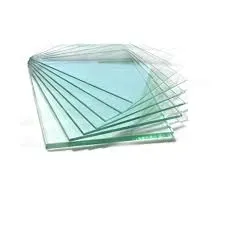Understanding Tempered Glass The Role of Manufacturers
Tempered glass, also known as toughened glass, has become increasingly popular across various industries due to its remarkable strength and safety features. It is mainly used in locations where safety and durability are essential, such as in buildings, automotive applications, glass doors, and shower enclosures. The process of manufacturing tempered glass is fascinating and complex, involving several stages that ensure the final product meets the stringent safety standards demanded by consumers and regulatory agencies alike.
The Tempering Process
The key to the strength of tempered glass lies in the tempering process. This process involves heating the glass to over 600 degrees Celsius (about 1100 degrees Fahrenheit) and then rapidly cooling it. The heating process puts the outer surface of the glass into compression, while the interior remains in tension. This combination of forces makes tempered glass up to five times stronger than regular glass.
During the manufacturing stage, glass sheets are carefully cut to the desired dimensions before being cleaned to remove any impurities. The quality of initial raw materials is crucial; manufacturers must ensure that they are working with high-grade glass to achieve optimal results in strength and clarity. After cutting, the glass moves to an oven where it is heated and subsequently cooled in a controlled environment. This precise manipulation of temperature helps manufacturers produce glass that can withstand sudden impacts or temperature fluctuations without shattering into sharp, dangerous shards.
Quality Assurance
Manufacturers of tempered glass emphasize quality assurance throughout the production process. Rigorous testing is conducted to ensure that each sheet of glass meets safety standards such as those set by the American National Standards Institute (ANSI) or the International Organization for Standardization (ISO). These standards focus on ensuring that the tempered glass can tolerate specific temperature ranges and mechanical stresses.
Manufacturers often use specialized equipment for testing the physical properties of tempered glass, including its strength, thermal resistance, and impact resistance. The ability to pass these tests is vital, as tempered glass is often used in critical applications, including facades of skyscrapers and safety glass in vehicles. Any failure in quality can lead to severe consequences, not only harming users but also tarnishing the manufacturer’s reputation.
tempered glass manufacturer
Applications of Tempered Glass
The applications of tempered glass are vast and varied. In architecture, it is favored for its aesthetic appeal and safety, making it an ideal choice for large glass panels in office buildings and homes. In the automotive industry, tempered glass is used for side windows and rear windows for safety reasons; they shatter into small, blunt pieces rather than sharp shards, minimizing the risk of injury.
Another significant application of tempered glass is in shower enclosures and glass doors, providing a sleek and modern look while ensuring safety
. Manufacturers often offer customized solutions, providing products tailored to specific customer needs, whether it’s unique measurements or decorative treatments.
Environmental Considerations
As environmental consciousness grows, tempered glass manufacturers are also focusing on sustainable practices. The glass industry is inherently energy-intensive due to the high temperatures required in the tempering process. However, by investing in energy-efficient technology and using recycled materials, manufacturers aim to reduce their carbon footprint.
Additionally, tempered glass is 100% recyclable, which means that end-of-life products can be processed into new glass, promoting a circular economy. By following sustainable practices, tempered glass manufacturers not only contribute to environmental protection but also meet the increasing demand from eco-conscious consumers.
Conclusion
In summary, tempered glass manufacturers play a critical role in providing a product that is not only visually appealing but also exceptionally durable and safe. The processes they utilize ensure high-quality outputs that meet rigorous safety standards while also addressing modern environmental concerns. As innovation continues to advance within the materials industry, it is likely that tempered glass will remain a popular choice across various sectors, solidifying its status as a crucial element in both design and functionality.
 Afrikaans
Afrikaans  Albanian
Albanian  Amharic
Amharic  Arabic
Arabic  Armenian
Armenian  Azerbaijani
Azerbaijani  Basque
Basque  Belarusian
Belarusian  Bengali
Bengali  Bosnian
Bosnian  Bulgarian
Bulgarian  Catalan
Catalan  Cebuano
Cebuano  Corsican
Corsican  Croatian
Croatian  Czech
Czech  Danish
Danish  Dutch
Dutch  English
English  Esperanto
Esperanto  Estonian
Estonian  Finnish
Finnish  French
French  Frisian
Frisian  Galician
Galician  Georgian
Georgian  German
German  Greek
Greek  Gujarati
Gujarati  Haitian Creole
Haitian Creole  hausa
hausa  hawaiian
hawaiian  Hebrew
Hebrew  Hindi
Hindi  Miao
Miao  Hungarian
Hungarian  Icelandic
Icelandic  igbo
igbo  Indonesian
Indonesian  irish
irish  Italian
Italian  Japanese
Japanese  Javanese
Javanese  Kannada
Kannada  kazakh
kazakh  Khmer
Khmer  Rwandese
Rwandese  Korean
Korean  Kurdish
Kurdish  Kyrgyz
Kyrgyz  Lao
Lao  Latin
Latin  Latvian
Latvian  Lithuanian
Lithuanian  Luxembourgish
Luxembourgish  Macedonian
Macedonian  Malgashi
Malgashi  Malay
Malay  Malayalam
Malayalam  Maltese
Maltese  Maori
Maori  Marathi
Marathi  Mongolian
Mongolian  Myanmar
Myanmar  Nepali
Nepali  Norwegian
Norwegian  Norwegian
Norwegian  Occitan
Occitan  Pashto
Pashto  Persian
Persian  Polish
Polish  Portuguese
Portuguese  Punjabi
Punjabi  Romanian
Romanian  Russian
Russian  Samoan
Samoan  Scottish Gaelic
Scottish Gaelic  Serbian
Serbian  Sesotho
Sesotho  Shona
Shona  Sindhi
Sindhi  Sinhala
Sinhala  Slovak
Slovak  Slovenian
Slovenian  Somali
Somali  Spanish
Spanish  Sundanese
Sundanese  Swahili
Swahili  Swedish
Swedish  Tagalog
Tagalog  Tajik
Tajik  Tamil
Tamil  Tatar
Tatar  Telugu
Telugu  Thai
Thai  Turkish
Turkish  Turkmen
Turkmen  Ukrainian
Ukrainian  Urdu
Urdu  Uighur
Uighur  Uzbek
Uzbek  Vietnamese
Vietnamese  Welsh
Welsh  Bantu
Bantu  Yiddish
Yiddish  Yoruba
Yoruba  Zulu
Zulu 

